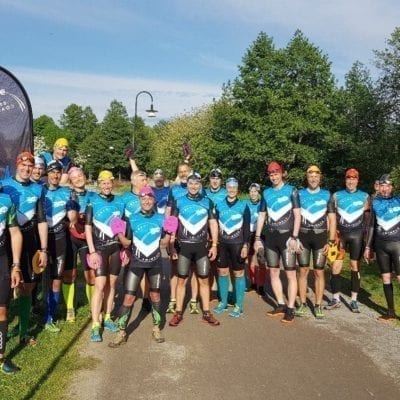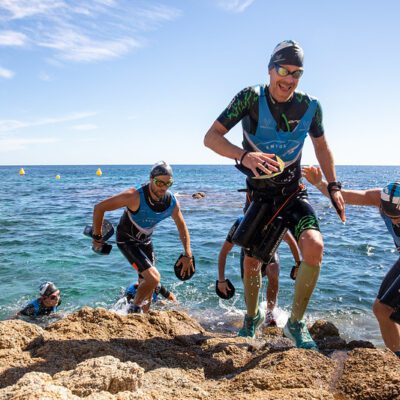Can our brain create alternate movement patterns so that despite some severe injuries, you will be able to continue your practice? This was the question Moshe Feldenkrais asked himself after a bad knee injury during 2nd WW. Team Envol member Bénédicte Motz is learning about the Feldenkrais method.
(The Feldenkrais Method is a type of exercise therapy devised by Israeli Moshé Feldenkrais (1904–1984) during the mid-20th century. The method is claimed to reorganize connections between the brain and body and so improve body movement and psychological state. – Wikipedia)
I live in Stockholm since almost 6 years and enjoy the nature around by walking, running, swimming and cycling. I have been practicing triathlon since 2013 but I do not train for specific races, it is a moment of breathtaking and liberty that I need every day.
Four shin splints later
Before practicing triathlon, I was solely running, and every day. It caused me a severe chronic shin splint. After the fourth one, I got the advice to not only treat it with my osteopath or my physiotherapy but I needed something more that could help me change my way of running.I heard about the story of Moshe Feldenkrais which got me inspired! I thought it could be the solution, retrain my brain to be able to use my body differently not to trigger the chronicity of my shin inflammation.
I started with Functional Integration (FI) sessions, where the practitioner would interact with my nervous system to reorder the organisation of my skeleton. It means to release unnecessary tensions, so that body parts that functionally move together can do it with less effort. As an example, as one shoulder blade goes up, the opposite hip could go down, thanks to not having tensions in the spine and other bones/muscles that link shoulder blade and hip.Seven sessions were enough for me to get a base of body awareness which I could then continue exploring on my own – doing movement slowly and exploring how each movement works, comparing left and right side and find the way to make it work that requires the less muscle strength and effort.
I also took a session to improve running technique, which was so easy to get right since I was more aware of my body. I felt exactly what my hip joints, my shoulders and legs were doing and could correct their behaviour.
No muscles blocking the route
This method gave me several things:– I got more efficient in the way I was moving and doing sports, I could feel light and I could run, swim and bike faster without training harder or pushing harder during training sessions. My skeleton and muscles were organised in such a way that every part of the body could move together. Each time the foot hits the ground the force transmitted from the hit could traverse my body to the head. No muscles were blocking the route.– It gave me the ability to better feel when something starts to hurt. I could then explore just with small and slow movements where it could come from and try to release tensions.– It gave me the ability to use my body efficiently not only in sports, but in my everyday life, reducing stress and tensions.
Would you like to try?
I literally loved this method. I choose to study it, to one day quit the software engineering field to become Feldenkrais practitioner. I want to bring this method to other people who would be interested in it! It can be useful for everyone, now it is especially used for dancers, musicians, elderly people (who need to move differently or learn how to fall safely) and it slowly starts to be used for sports.At the moment I am in my third year of four years and I am certified to teach ATMs (Awareness Through Movement). I am looking forpeople who would be interested to try out. If you want to know more about what I am doing you can have a look at : https://benedictemotz.wixsite.com/movinmind “Bénédicte






